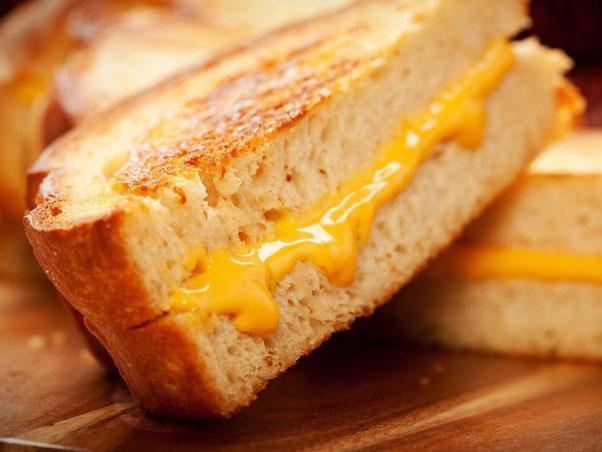The Art and Evolution of Sandwiches: A Culinary Symphony

The humble sandwich, a versatile culinary creation, has transcended its modest origins to become a global sensation. With a rich history dating back to the 18th century, the sandwich has evolved into a canvas for creativity, combining diverse flavors, textures, and cultures in a handheld masterpiece. This article delves into the art and evolution of sandwiches, exploring their origins, cultural impact, and the endless possibilities they offer to food enthusiasts around the world.
The Birth of the Sandwich
The birth of the sandwich can be traced back to 1762 when John Montagu, the 4th Earl of Sandwich, is said to have popularized this portable meal. Legend has it that the Earl, engrossed in a gambling session, requested his meat be served between slices of bread to avoid interrupting the game. This simple act of convenience marked the inception of a culinary revolution.
Early Evolution
The concept of placing ingredients between slices of bread quickly gained popularity, and by the 19th century, sandwiches had become a staple of European and American diets. The Industrial Revolution played a crucial role in sandwich evolution, as the increased availability of pre-sliced bread made sandwich preparation more accessible to the masses.
Cultural Influences
As the sandwich spread across the globe, it adapted to local tastes and ingredients, leading to a diverse array of regional specialties. In the United States, the classic peanut butter and jelly sandwich emerged as a lunchbox favorite, while the British embraced the cucumber sandwich as an essential part of afternoon tea. In Mexico, the torta became a beloved street food, and in Vietnam, the banh mi combined French and Vietnamese flavors to create a unique fusion.
Ingredients as the Artistic Palette
What sets sandwiches apart is the sheer variety of ingredients that can be used to craft them. From the traditional to the avant-garde, the sandwich allows for an endless combination of flavors, textures, and cultural influences. Meats, cheeses, vegetables, spreads, and condiments come together to form a harmonious blend that satisfies both the palate and the imagination.
Bread: The Foundation
The choice of bread is crucial to the success of a sandwich. From the simplicity of white bread to the robustness of whole-grain or the exotic allure of ciabatta and baguettes, each type of bread brings its own character to the sandwich. Gluten-free options and lettuce wraps have also expanded the possibilities, catering to a diverse range of dietary preferences.
Proteins: Beyond the Basics
While the classic ham and cheese or turkey and cranberry sandwiches remain popular, the world of sandwich proteins has expanded dramatically. From slow-cooked pulled pork to seared ahi tuna, the options are as vast as the culinary imagination. Vegetarian and vegan alternatives, such as grilled tofu or falafel, have also become integral parts of the sandwich landscape.
Cheese: The Melted Magic
Cheese, with its diverse textures and flavors, adds a layer of richness and complexity to sandwiches. Whether it’s the gooey goodness of melted cheddar on a grilled cheese sandwich or the tangy kick of feta in a Mediterranean wrap, cheese elevates the sandwich to a sensory delight.
Vegetables and Condiments: Crunch and Zing
Fresh, crisp vegetables provide a burst of flavor and texture to sandwiches. Lettuce, tomatoes, onions, and pickles are staples, but the possibilities extend to roasted red peppers, avocado, sprouts, and more. Condiments, ranging from classic mustard and mayonnaise to exotic aiolis and chutneys, contribute the final touch, adding a layer of moisture and zest.
The Rise of Gourmet and Fusion Sandwiches
In recent years, the sandwich has undergone a renaissance with the rise of gourmet and fusion creations. Chefs and food enthusiasts have embraced the opportunity to experiment with unique combinations, pushing the boundaries of what a sandwich can be. Gourmet ingredients like truffle oil, artisanal cheeses, and specialty cured meats have found their way between slices of bread, creating a new era of elevated sandwich experiences.
Global Fusion: Where Cultures Collide Deliciously
The fusion of culinary traditions has given rise to sandwiches that transcend borders. The sushi burrito blends Japanese and Mexican influences, while the kimchi grilled cheese marries Korean and American flavors. These global fusions showcase the power of sandwiches to bridge cultural divides and celebrate the diversity of ingredients from around the world.
Conclusion
From its modest beginnings in the 18th century to its current status as a global culinary phenomenon, the sandwich has come a long way. It has evolved into an art form, a canvas for culinary creativity that transcends cultural boundaries. The combination of diverse ingredients, innovative preparations, and global influences ensures that the sandwich will continue to captivate taste buds and inspire the imagination of food enthusiasts worldwide. As we savor each bite of this handheld masterpiece, we celebrate the enduring legacy and the limitless potential of the ever-evolving sandwich.
-
What is a sandwich?
A sandwich is a food item typically consisting of one or more types of food, such as vegetables, meats, cheeses, or spreads, placed between slices of bread. It serves as a convenient and portable meal.
-
Who invented the sandwich?
The sandwich is widely credited to John Montagu, the 4th Earl of Sandwich, who is said to have popularized the concept in the 18th century. The legend goes that he requested his meat be served between slices of bread during a gambling session, giving birth to the modern sandwich.
-
What are the basic components of a sandwich?
A standard sandwich consists of two slices of bread with a filling in between. The filling can include proteins (meats, cheeses, tofu), vegetables, condiments (mayonnaise, mustard), and additional spreads.
-
What types of bread are commonly used for sandwiches?
Various types of bread are used for sandwiches, including white, whole grain, multigrain, rye, ciabatta, baguette, and more. Gluten-free options and lettuce wraps are also popular alternatives.
-
Are there vegetarian or vegan sandwich options?
Yes, there are numerous vegetarian and vegan sandwich options. These may include plant-based proteins like tofu or tempeh, along with a variety of vegetables, spreads, and vegan cheeses.
-
What are some classic sandwich varieties?
Classic sandwiches include the BLT (bacon, lettuce, tomato), the club sandwich, peanut butter and jelly, ham and cheese, and the turkey club. These vary regionally and culturally.
-
How has the sandwich evolved over time?
The sandwich has evolved significantly, with new ingredients, preparations, and global influences. Gourmet and fusion sandwiches have become popular, showcasing the creativity and diversity in modern sandwich-making.
-
Are there healthy sandwich options?
Yes, sandwiches can be a healthy option, especially when made with whole-grain bread, lean proteins, and a variety of fresh vegetables. Choosing low-fat condiments and spreads also contributes to a healthier sandwich.
-
Can sandwiches be suitable for special diets?
Absolutely. With the availability of gluten-free bread, vegan proteins, and other alternatives, sandwiches can be adapted for various dietary preferences, including gluten-free, vegetarian, and vegan diets.
-
What is a famous international sandwich?
The banh mi from Vietnam, the Italian panini, and the Mexican torta are examples of internationally renowned sandwiches. Each reflects the unique flavors and culinary traditions of its respective region.
-
How can I make my sandwiches more exciting?
Experiment with diverse ingredients, try new bread types, and incorporate unique spreads or condiments. Adding fresh herbs, exotic cheeses, or unconventional proteins can elevate your sandwich-making experience.
-
Can we serve sandwiches hot or cold?
Sandwiches can be served either hot or cold, depending on the ingredients and personal preference. Grilled cheese, paninis, and hot subs are popular warm options, while traditional cold sandwiches remain a classic choice.
-
Are there cultural variations of the sandwich?
Yes, different cultures have their own unique takes on sandwiches. Examples include the French croque-monsieur, the Middle Eastern falafel wrap, and the Japanese katsu sando.
-
What is the appeal of sandwiches?
Sandwiches are popular due to their convenience, versatility, and the endless possibilities for customization. They offer a satisfying and portable meal for people with diverse tastes and dietary preferences.






